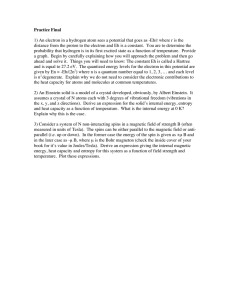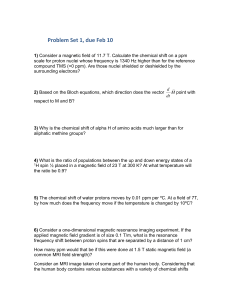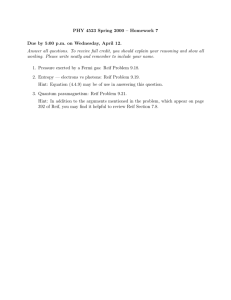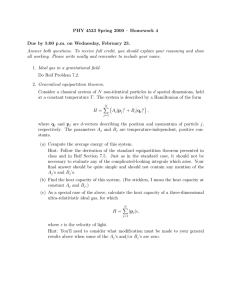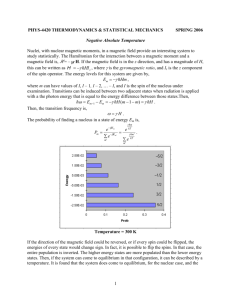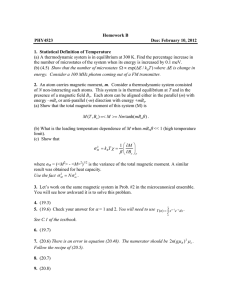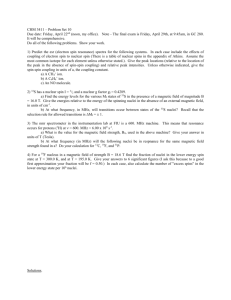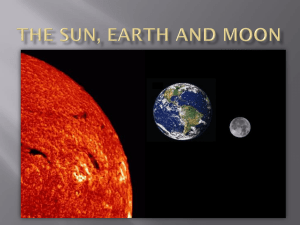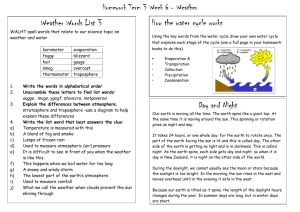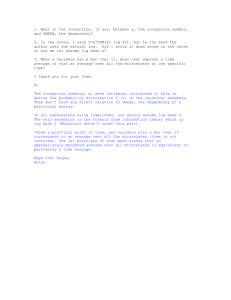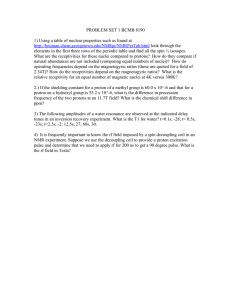PHY 4523 Spring 2000 – Homework 1
advertisement
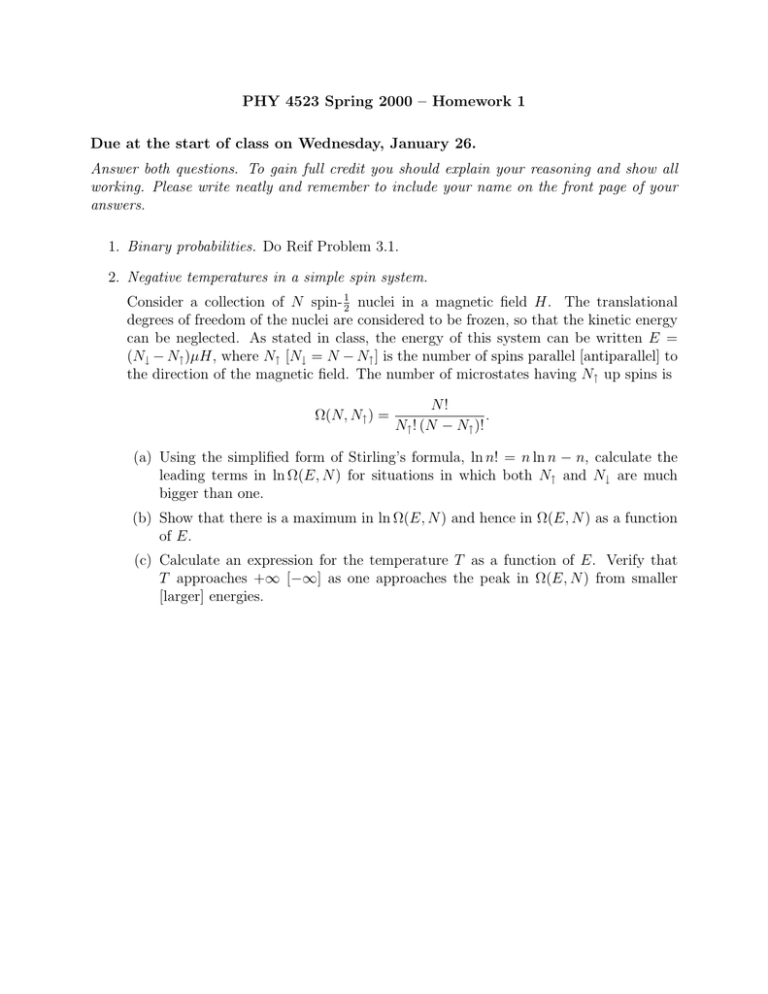
PHY 4523 Spring 2000 – Homework 1 Due at the start of class on Wednesday, January 26. Answer both questions. To gain full credit you should explain your reasoning and show all working. Please write neatly and remember to include your name on the front page of your answers. 1. Binary probabilities. Do Reif Problem 3.1. 2. Negative temperatures in a simple spin system. Consider a collection of N spin- 12 nuclei in a magnetic field H. The translational degrees of freedom of the nuclei are considered to be frozen, so that the kinetic energy can be neglected. As stated in class, the energy of this system can be written E = (N↓ − N↑ )µH, where N↑ [N↓ = N − N↑ ] is the number of spins parallel [antiparallel] to the direction of the magnetic field. The number of microstates having N↑ up spins is Ω(N, N↑ ) = N! . N↑ ! (N − N↑ )! (a) Using the simplified form of Stirling’s formula, ln n! = n ln n − n, calculate the leading terms in ln Ω(E, N ) for situations in which both N↑ and N↓ are much bigger than one. (b) Show that there is a maximum in ln Ω(E, N ) and hence in Ω(E, N ) as a function of E. (c) Calculate an expression for the temperature T as a function of E. Verify that T approaches +∞ [−∞] as one approaches the peak in Ω(E, N ) from smaller [larger] energies.

